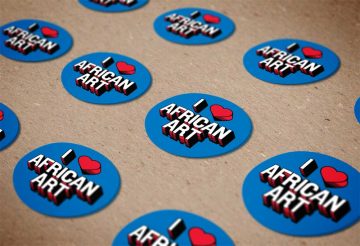Home | History of Benin | Early Photography in Nigeria | S.O. Alonge: The Early Years | Ideal Studio, Benin City | Picturing a New Society | Ideal Studio Portraits | Ideal Studio Setting | Royal Court Photography | Commemorative Objects
Dry Glass Plate Negatives
Richard Leach Maddox, a British physician and photographer, invented the gelatin silver dry glass plate negative in 1871. The dry plate process quickly replaced the wet plate collodion process that required the mixing of dangerous chemicals and immediate exposure of the wet plate. With the dry plate process, the glass was precoated with gelatin and sensitized with silver salts. It allowed for faster exposure times and could be stored undeveloped for a long period of time.
Alonge’s first large format camera was an Imperial Triple Extension, which held various sizes of glass negatives, including half plates (6 1/2 x 4 1/4 in.), 7-by-5-inch plates, and full plates (6 1/2 x 8 1/2 in.). Unexposed glass plates were loaded into the appropriate size film holders in the dark and exposed to sunlight when the subject was ready. Alonge ordered his dry glass plate negatives from Gevaert, Kodak, and Ilford.

Thornton-Pickard, United Kingdom, 1903
Outfitted with a Congo Commercial lens (180mm), Yamasaki Optical Co., Ltd., in Tokyo, Japan
Wood, glass, brass, leather
20.4 x 22.7 x 10.6 cm (8 1/16 x 8 15/16 x 4 3/16 in.)
Cap diam: 6.2 cm (2 1/2 in.), H: 1.2 cm (1/2 in.)
S011.1
Hand-coloring Photographs
Since the invention of photography in 1839, photographers have hand-tinted their daguerreotypes, tintypes, postcards, and photographic prints for artistic effect or to create a heightened sense of realism. Specialized artists used brushes, cotton swabs, and their fingers to apply dyes, watercolors, oils, crayons, and pastels to the surface of photographs. Hand-coloring photographs with oils required knowledge of and skills with drawing and painting and had a long tradition in Japan, China, and India.
Marshall Photo-Oil Colors came in the Master and Artisan sets, which were most often used by professional photographers and advanced amateurs. Alonge demonstrated his artistic talents on a number of his favorite portraits with the Marshall’s paint set he owned.
Alonge’s first professional large format camera was the Imperial Triple Extension designed by British manufacturer Thornton-Pickard in 1903 and popular from the 1910s to the 1930s. It featured a Cooke Anastigmatic (flat-field) lens for glass plates and a triple extension front with leather bellows that extended to 22 inches. This early soft-focus Cooke lens employed a diffusion adjustment allowing the photographer to distribute any degree of softness evenly throughout the plate. The camera bellows, mounting bracket, and wide-angle lens allowed Alonge to photograph large group portraits with sharpness and great detail.
Alonge replaced the Cooke lens with a Congo lens manufactured by Yamasaki Optical Co., Ltd., in Tokyo, Japan. The Commercial Congo lens was made for large-format cameras and was considered best for portrait and tourist photography.

John G. Marshall Company, Inc., New York
1949
Closed: 1 3/4 x 12 3/8 x 8 in.
Open: 9 x 12 3/8 x 8 in.
S011.11
Rolleiflex Camera and Embossing Stamp
“Rolleiflex” refers to a line of high-end medium format cameras originally made by the German company Franke & Heidecke. When 120mm black-and-white roll film became available, many professional photographers turned to the Rolleiflex camera for its ease of operation and portability. The twin-lens reflex system made it possible to view the scene with one lens and expose the film with the other lens.
Alonge switched to 120mm roll film in the 1950s and 1960s, and used his Rolleiflex camera to photograph local events and the rise of new businesses and industries in Benin City. He used an embosser (in case) to stamp the Ideal Studio name and address on the mats of his photographs.


